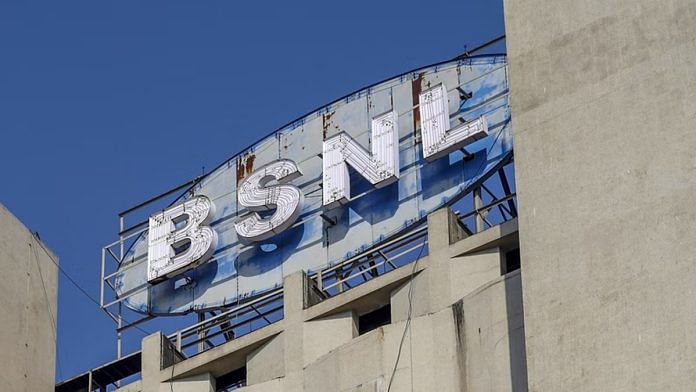The central government’s plan to revive Bharat Sanchar Nigam Limited, formed in September 2000 through the merger of the Department of Telecom Services and the Department of Telecom Operations, raises concerns rather than addressing the underlying issues. Several Central Public Sector Enterprises have lost their relevance and purpose, becoming bottomless pits of government munificence. Despite injecting nearly Rs 300 billion into Air India, it eventually had to be sold, absorbing the losses. Now, the government is infusing around $9.5 billion into the ailing telecom Public Sector Undertaking BSNL with the promise of resuscitating it.
The government’s revival package includes a scheme worth Rs 26,316 crore to extend 4G services to approximately 25,000 villages, conversion of spectrum dues to equity, capital expenditure (capex) support, debt restructuring with sovereign guarantee backing, and viability gap funding for rural wireline operations. In the fiscal year 2024, the government has provisioned Rs 2,218 crore as grant-in-aid for the telco’s GST payments for the purchase of 4G spectrum, and an additional Rs 2,671 crore for a voluntary retirement scheme (VRS) offered to employees of BSNL and MTNL. The government should provide better justifications for investing around nine million taxpayers’ money in BSNL beyond providing connectivity to 25,000 villages and funding the VRS for redundant and unproductive employees.
Don’t compete with private players
The government’s claim of reaching rural and remote areas “where commercial operators do not wish to go” does not hold much water. A similar argument was made while sinking substantial funds into the erstwhile government-owned aviation company, Air India, which was supposed to serve flyers in remote areas. Ironically, it is private airlines that provide maximum connectivity to remote areas and select destinations with greater tourist and religious significance, leading to increased footfall and profitability. Even in the telecom sector, private players have a significant presence throughout the country because the rural market is booming, and offering “urban-like” connectivity in remote areas generates more income and profitability for private operators.
The size of the rural fast-moving consumer goods (FMCG) market in India has reached about $110 billion, accounting for 45 percent of the overall FMCG sector. In the next five years, the market is projected to grow six-fold, reaching around $615 billion. Moreover, with improved connectivity, higher income levels, and multiple e-commerce and payment platforms, non-food spending in rural India is expected to increase substantially. The monthly per capita expenditure has already risen by 17 percent, according to the National Sample Survey Organisation (NSSO) report.
Private operators have every reason to rush to these rural areas to gain a “first movers’ advantage”. BSNL is already lagging behind, rolling out 4G services while private players have started providing 5G and even promising 6G once it becomes commercially available. Although BSNL offers a Distributed Ledger Technology (DLT) platform for commercial operations with a blockchain-based stack that enables users to own, control, and manage commercial communications, this service is primarily focused on urban areas. Despite BSNL’s claims of guaranteed privacy, complete privacy in the telecom sector is non-existent worldwide.
If the government is serious about its promises and the infusion of additional funds into BSNL, it should seriously reconsider the company’s mandate. The government is ill-suited to compete with private players who prioritise maximising Return on Investment (ROI), unlike BSNL, which prioritises service over profit. In the bargain, BSNL neither provides service nor earns profit.
Also read: India’s public sector enterprises: Where do we go from here?
Research, infrastructure support
In this age of rapid communication and growth, what the telecom sector truly needs is more funds for research and infrastructure support, which private entities are hesitant to provide due to the need for substantial investments and the absence of guaranteed success and ROI. It would be wise for the government to allocate this money to research and development for 6G technology and provide infrastructure support to the telecom sector, which is essential for trade and manufacturing. Additionally, core infrastructure like satellite services and increased bandwidth should be prioritised.
The Indian National Satellite (INSAT) system, consisting of nine operational communication satellites in geostationary orbit, including the INSAT-1B, has initiated a major revolution in India’s telecommunications sector over the past four decades. With more than 200 transponders in the C, Extended C, and Ku-bands, the INSAT system supports telecommunications, television broadcasting, satellite news gathering, societal applications, weather forecasting, disaster warning, and search and rescue operations. The best approach would be to link investments in BSNL to the work of the Indian Space Research Organisation (ISRO) and establish a commercial arm to provide additional satellite services.
Satellite communications can play a greater role in connecting rural banking networks, facilitating ATM/UPI transactions, expanding the reach of the Pradhan Mantri Jan Dhan Yojana (PMJDY) accounts, strengthening the direct transfer system, and offering reliable and cost-effective services compared to dial-up and wireless broadband options. Instead of competing with private sector telecom operators, BSNL, through a joint venture with another government agency like ISRO, can use the funds to diversify its commercial activities and contribute to the scaling up of telecom infrastructure, albeit at a price. This approach would ensure better utilisation of taxpayers’ money, leading to increased dividends and better ROI.
BSNL could also become part of the regulatory mechanism by partnering with the Telecom Regulatory Authority of India (TRAI) while maintaining its service provision capabilities to be functional in emergencies or cartelisation.
If the Narendra Modi government’s intention is to eventually sell off the loss-making venture, the best time to do so would be now, without sinking any more funds into it.
Seshadri Chari is the former editor of ‘Organiser’. He tweets @seshadrichari. Views are personal.
(Edited by Prashant)



